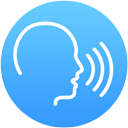







A single-car accident is an accident in which only one vehicle is involved. However, several people can be injured or killed in a single-car accident if more than one person is in the vehicle.
Even though there are usually few people involved in a single-car accident, it is this type of accident that causes the most deaths. About 30% of all fatal accidents are single-car accidents.
 A lone vehicle driving off the road is a common type of single-car accident
A lone vehicle driving off the road is a common type of single-car accident
The three most common causes (often in combination with each other) for single-car accidents are:
Single-car accidents are the most common type of accident outside densely built-up areas.
About 40% of all single-car accidents occur when it is dark and at dawn and almost 50% of all drivers who die in single-car accidents are under the influence of alcohol.
A head-on collision is an accident in which two vehicles collide head-on after one of the vehicles has crossed over to the wrong side of the road.
Thanks to newly built central barriers, the number of fatalities in head-on collisions has been halved over the past ten years. However, it remains the accident type that causes the second most deaths (after single-car accidents).
 The force of impact when two oncoming vehicles collide is enormous
The force of impact when two oncoming vehicles collide is enormous
Common causes (often in combination with each other) of head-on collisions are:
A junction accident is an accident that occurs in some type of junction. This type of accident is usually caused by drivers who have not understood that they have a duty to give way or who misjudge the distance to a vehicle on the intersecting road, and perhaps its speed as well.
Sometimes drivers miss that there is a vehicle on the intersecting road altogether.
You must always wait to enter a junction if you have the slightest doubt as to whether you will be able to enter it without endangering or obstructing other road users.
 Confusing a fast motorcycle for a slow moped can result in a junction accident
Confusing a fast motorcycle for a slow moped can result in a junction accident
Turning left on a country road is another potentially dangerous situation which causes many serious accidents every year. If you perform a left turn in the wrong way, or at the wrong time, you risk:
A rear-end collision is an accident in which one vehicle is hit from behind by another vehicle. A relatively small proportion of all rear-end collisions lead to fatalities; however, they often lead to severe neck injuries – so-called whiplash injuries.
Rear-end collisions are often caused by drivers:
 If you hit another vehicle from behind, you are almost always at fault
If you hit another vehicle from behind, you are almost always at fault
You must always adapt your speed and distance to the vehicle in front according to visibility, road surface conditions and general traffic conditions. The driver in the vehicle in front must be able to brake hard at any time without any risk of you hitting the vehicle from behind.
The fact that your car has lost grip on a slippery road is never a valid excuse if you cause an accident. If this were to happen, you did not properly adapt your speed according to the road surface conditions.
Read more about maintaining a properly adapted speed
Read more about maintaining a safe distance ahead
Since all types of accidents can occur in the dark, a large part of all traffic accidents are darkness accidents. About 30% of all traffic accidents in which someone is injured occur in the dark.
You are 2-3 times more likely to be involved in an accident when driving in the dark than when driving in daylight. In the dark, it is more difficult to detect pedestrians, cyclists and animals along the roads.
In the evening and at night, many drivers are also tired, have reduced concentration and are less attentive. Drivers who are affected by alcohol or drugs are also more common at this time.
 About 30% of all traffic accidents in which someone is injured occur in the dark
About 30% of all traffic accidents in which someone is injured occur in the dark
Unprotected road users are particularly vulnerable when it is dark. Keep in mind that pedestrians and other unprotected road users are even harder to detect in darkness if it is raining, snowing or foggy.
About 70,000 wildlife accidents are reported each year in Sweden. A majority of these accidents involve roe deer. Luckily, relatively few wildlife accidents result in the death of a human being, but when that is the case, it is almost exclusively in the event of collisions with moose.
Because a moose's legs may be over one metre long, it is not uncommon for the animal's heavy body (which can weigh up to 700 kg) to be thrown onto the hood of a car at the moment of collision. If this happens, the moose might crash into the windshield or land on the roof. Sometimes, the moose's hooves or horns may go through the windshield, which can cause serious or fatal injuries to both driver and passengers.
 Wildlife accidents with moose are the most dangerous
Wildlife accidents with moose are the most dangerous
The risk of wild animals crossing the road exists throughout Sweden, at all times, all year round. In order to reduce the risk of a wildlife accident happening it is therefore important to know when and where the risk of encountering wild animals on the road is greatest.
When the risk is greatest
 A wildlife accident can occur at all times, all year round
A wildlife accident can occur at all times, all year round
Where the risk is greatest
Many animals, such as moose, roe deer and wild boar often travel in groups. If you see one animal crossing the road you must be prepared for at least another two to three animals crossing the road in about the same place.
 Moose, roe deer, wild boar and many other animals often travel in groups
Moose, roe deer, wild boar and many other animals often travel in groups
You should not veer or brake hard for small animals such as squirrels or hares as doing so would expose other road users to unnecessary danger. You can ease off the accelerator or lightly apply the brakes if it is safe to do so, to avoid running over the animal. However, the basic rule is that you should neither veer nor brake hard.
You should also not veer for roe deer or other hoofed animals that are lower than the hood of the car, instead you should brake to try to avoid a collision. If you veer or swerve you risk driving off the road or colliding with oncoming traffic, something that is far more dangerous than colliding with a roe deer.
You should, however, veer for moose (as well as for red deer and fallow deer) if doing so is necessary to avoid a collision. You should of course first try to stop the car by braking. But if the collision cannot be avoided you should steer towards the moose's rear end. If you are lucky this will make the heavy forepart of the animal's body end up outside the critical windshield zone.
 If you cannot avoid a collision with a moose you should steer towards its rear end
If you cannot avoid a collision with a moose you should steer towards its rear end
In all situations where you have to veer, you must be aware of the dangers of crossing over to an oncoming lane. You then expose yourself as well as your fellow road users to death.